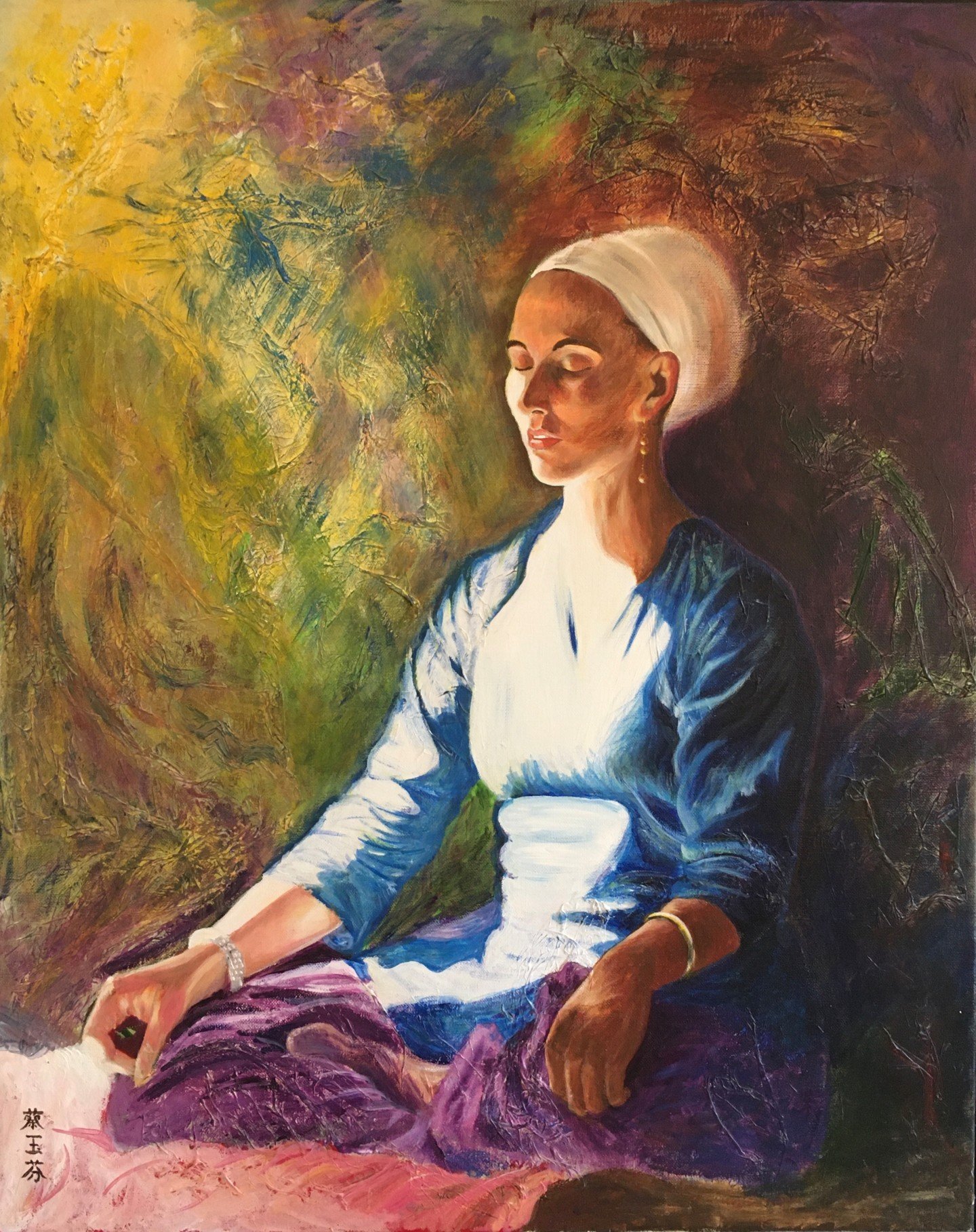Meditate firmly and simultaneously on the above as void, the base as void, and the heart as void. Then, by being free of thoughts, will arise the state that is permanently free of thoughts.
Verse 45, Vigyan Bhairava Tantra

How to do this method
The meditation given in this verse is a slight variation of the previous one. In the previous meditation, one had to consider the top of the body and the lower part of the body as void. In this practice, the area of the heart has also been added. Therefore, one has to simultaneously consider the top of the body, the base of the body and the area of the heart to be void, empty.
- Sit comfortably and close your eyes. Focus simultaneously on the three areas of your body – from the neck upwards, from the waist downwards, and the region of the heart. Consider these three areas to be empty, non-existent.
- Continuously believe these three areas do not exist. Instead, there is emptiness there.
- Once you are completely absorbed in this meditation, you will be free of thoughts. When your body and mind are empty or void, then who is there that can think? Once you are without thoughts for some time, you become permanently free of thoughts.
- Several meditation practices bring one’s attention to the present. In the present, the mind stops thinking. There is only awareness. Gradually, the number of thoughts starts decreasing. The gap between thoughts starts increasing. A time will come when thoughts stop altogether.
Being the Witnesses

When you believe you are not the body, then who are you? You are awareness, consciousness, the witness or the observer, who observes what the body is doing or thinking. These practices detach us from the body. They lead us directly into awareness. When we realize we are not the body but consciousness, we become aware. Our ego is our sense of separate identity. It is our identification with name and form rather than with universal consciousness. These verses are trying to change this. Instead of identifying with name and form, we are to identify with consciousness. We still carry on activities in this world through our bodies but no longer claim ownership for it. Our sense of doership disappears as our ego disappears. A master may still achieve great things in this world, but he does nothing. All things merely happen in his presence.
Tantra says that we all seek pleasures, and try to avoid pain, and that is why we suffer. That is also why we are obsessed with money and success. We believe that with money we can increase our pleasures and lessen our pain. However, pain is unavoidable. Pain and pleasure come together. You cannot have one without the other. Even a rich and successful person will have problems.
Pain and Pleasure

Tantra says the way to avoid suffering is not to avoid pain, (which is impossible) but to break the identification with the body. One has to give up the “I am the body” idea, and instead identify with the witness within them. When you can do this, no external event, no matter how terrible, will be able to affect you. Whatever is happening, is happening to your body and not to the real you.
The real you, the observer, remain unaffected by all external events. Once you are able to do this, you will find great peace. Something similar happens when we watch a movie. Sometimes, when we watch a movie, we become completely engrossed in it and react emotionally to what we see on the screen. Then, suddenly we become aware of ourselves watching the movie, and our whole attitude changes. We relax and enjoy the movie, without being affected by it. It is the same with life. Once we become aware of ourselves, we watch the passing scenes of life, without being affected by them. Not being attached to the body is great freedom. It frees one from the tensions and stresses of life. One is not bothered by what one has achieved or not achieved. Whether one has succeeded or failed. The achievements of the body are no longer of primary importance. As a witness, as consciousness, one observes the ups and downs of life with an equanimity that was not present earlier.


Give a Reply